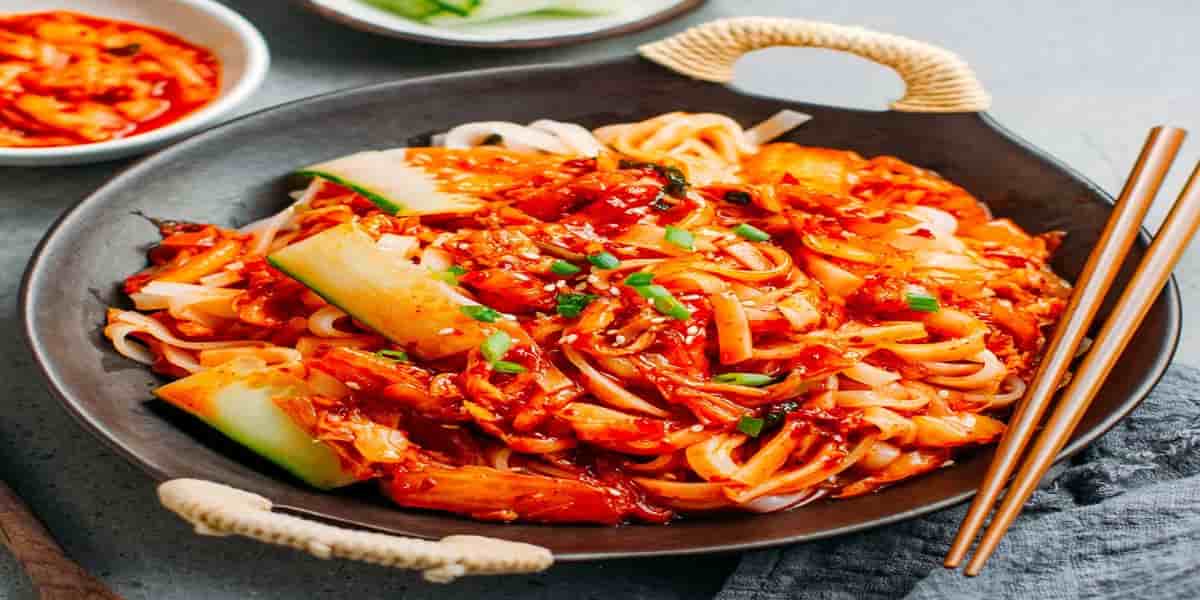Kimchi
Doodlebrary
- Kimchi is a traditional Korean fermented vegetable dish, primarily made with napa cabbage or radishes.
- It is a key part of Korean meals and is often served as a side dish but also used in a variety of recipes.
- Originated as a method to preserve vegetables for long periods, especially through harsh winters.
- Dates back over 3,000 years, with the recipe evolving over time to include new ingredients like chili peppers in the 16th century.
- Napa cabbage or Korean radishes form the base.
- Other ingredients: Korean chili powder (gochugaru), garlic, ginger, fish sauce or shrimp paste, and sometimes sugar.
- Variations include different vegetables like cucumbers, mustard greens, and perilla leaves.
- Vegetables are salted to draw out moisture, which helps create the right conditions for fermentation.
- A seasoned paste is then applied to the vegetables.
- Fermentation can last from a few days to several months, depending on the temperature and desired flavor.
- Rich in probiotics due to the fermentation process, supporting gut health.
- High in vitamins A, B, and C, and contains antioxidants.
- Low in calories but packed with fiber, making it a nutritious addition to any diet.
- More than just food, kimchi represents Korean traditions and family values.
- The process of making kimchi together, known as Kimjang, is a UNESCO-recognized cultural activity that strengthens community bonds.
- There are over 100 recognized types of kimchi.
- Common varieties include:
- Baechu kimchi (made with napa cabbage).
- Kkakdugi (cubed radish kimchi).
- Oi-sobagi (stuffed cucumber kimchi).
- Kimchi in Global Cuisine:
- While traditionally served as a side dish, kimchi is now featured in various global dishes.
- Examples: Kimchi fried rice, kimchi pancakes, kimchi soup, and fusion recipes like kimchi tacos or burgers.
- Kimchi can be stored for several months in the refrigerator, with its taste evolving as it ferments.
- Can be eaten fresh or aged, depending on individual preference.
- Its growing global popularity highlights its versatility and nutritious value.
- Kimchi is a unique blend of tradition, health, and flavor, representing Korean heritage and culinary innovation.
